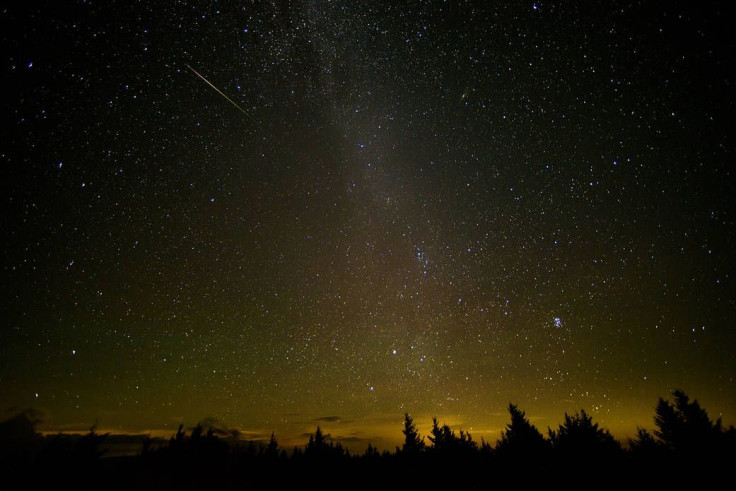Best Time To Watch Orionids Meteor Shower This Weekend

If the highly visible Uranus in the sky this week isn’t enough astronomy for you, you’re in luck. This weekend the Orionids meteor shower peaks thanks to Halley’s Comet, perfectly timed with the new moon for a darker night sky.
The shower peaks Friday morning but you’ll probably be able to see some of the meteors until Sunday morning as the Earth travels through the debris left behind by the comet. This happens around the same time every year even though the comet itself doesn’t visit Earth on a yearly basis.
There should be about 10 to 15 meteors per hour during the peak nights but you’ll have to look closely because these meteors are traveling about 41 miles per second. They’re known for being especially fast and bright. There are a few golden rules to follow to spot them. First try to get to an area away from light, that means if you’re in, or close to, a city get out to somewhere more suburban or rural. The best time for viewing will be in the pre-dawn hours, around 2 a.m. You’ll want to get comfortable and should definitely bring the appropriate clothes or blankets to stay warm as you’ll probably be outside for an hour or two.
Star up at the sky in the direction of Orion, more specifically look to Orion’s club in the constellation. If you’re good at identifying stars in the constellation, find Betelgeuse and look just north of it. The meteors will appear as though they're originating from this part of the sky, which is how the shower got the name "Orionids." Try to take in as much of the sky as possible, then you wait.
Clear weather is key for viewing so check the forecast before you set an alarm to wake up in the early morning hours and trek to a viewing spot. The Weather Channel has a useful page about the weather across the country for the nights of the shower.
The quick streams of light that shoot across the sky during a meteor shower are simply dust particles or small pieces of the meteor that have broken off and then burn up as they pass through Earth’s atmosphere. Meteors are just small pieces of comet or asteroid that burn up after entering Earth’s atmosphere, before entering the atmosphere they’re called meteoroids and when they made it through Earth’s atmosphere down to the surface of the planet they’re called meteorites, according to NASA.
While you’re looking for meteors you might also notice Uranus high in the sky. Uranus reached opposition on Thursday, this means the Earth was perfectly between the sun and Uranus, perfect for viewing. You’ll know you’re looking at it because it will appear to have a blue-green color that the other stars around it don’t have.
© Copyright IBTimes 2024. All rights reserved.





















